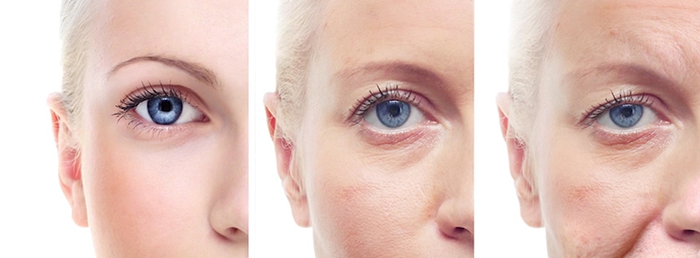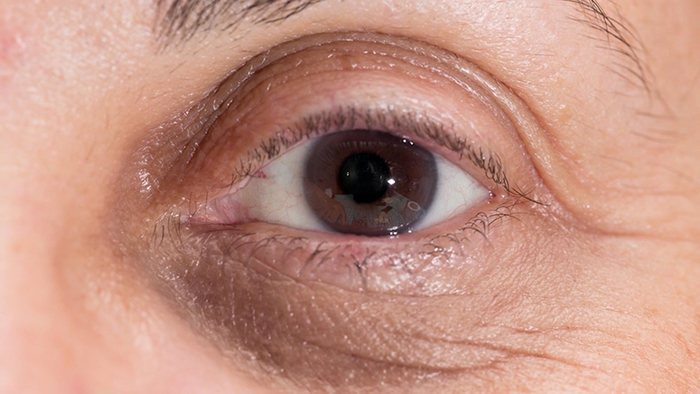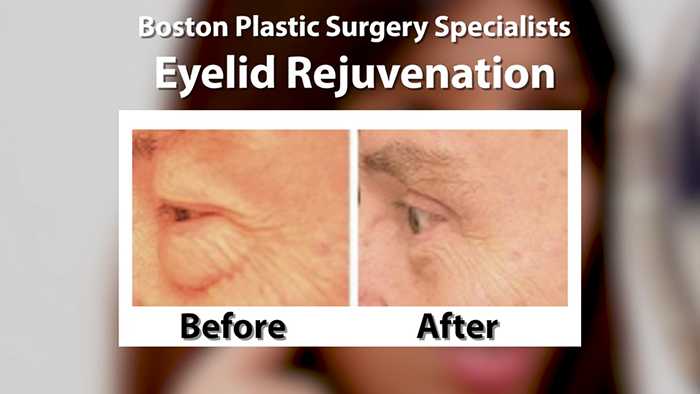While the most common search term for facial aging on the internet may be wrinkles, the second most common is dark circles under the eyes. It turns out that people are tired of looking tired. Cosmetic companies have spent billions marketing eye creams and concealers that claim to diminish your dark circles, but in reality, all they can do is alleviate some of the symptoms.
The only real cure for dark circles under the eyes is surgery. Dr. Brooke R. Seckel of Boston discusses a unique procedure to permanently eradicate your dark circles, the transconjunctival blepharoplasty with arcus marginalis release and fat grafting.
What Causes Dark Circles Under the Eyes?
Dark circles are actually not circles at all, they’re shadows. Because the skin right below the eyelid is attached to the bone, it does not move. This is not really a problem when we are young, but as we age, the skin of the lower eyelid, above this attachment, becomes loose. There is nothing behind it except fat, muscles and tissue. With time, that fat begins to herniate, which means that it pushes the skin of the lower eyelid out so that it becomes puffy. The result is an under eye bag. So, a “dark circle is actually a shadow caused by the normal eyelid skin aging and protruding over that skin that doesn’t move and creating a shadow in that skin that’s left attached to the bone,” explains Dr. Seckel.
A Surgical Solution for Dark Circles
The tranconjunctival blepharoplasty with arcus marginalis release and fat grafting is a specific lower blepharoplasty procedure that involves a surgeon going inside the eyelid and using a small laser to release that attachment of the skin to the bone. The advantage of this transconjunctival approach is that is leaves no visible scar on the lower lid. In a traditional lower blepharoplasty, the surgeon uses a scalpel, but this approach uses a laser. The benefits of wielding a laser of a scalpel are as follows:
- less bleeding
- a faster recovery
- a quicker surgery
- less severe bruising
- less swelling
- a more accurate result
Once the skin has been released from the bone, the surgeon then custom carves a little fat graft and places it underneath the dark circle to plump it up. This causes the dark circle or shadow to disappear permanently. “Dark circles don’t come back,” says Seckel.
The procedure takes about 30 minutes under general anesthesia. The reason for doing the procedure under general anesthesia as opposed to local anesthesia is it hurts otherwise. Local anesthesia can completely control pain. It does not, however, block temperature fibers, so the patient can feel the heat of the laser, and it’s uncomfortable. Furthermore, the patient gets uncomfortable at the most critical part of the procedure which may adversely affect the outcome.
The recovery from this procedure is basically pain-free. Patients will need to use an eye ointment to keep the eyes moist for first 2-3 days, which prohibits reading or using a computer, but that’s really it. The most difficult part of the recovery is the bruising as most facial surgery is going to leave bruises. Every patient heals at his or her own rate, but most of the bruising will usually dissipate in about 2-3 weeks. In the meantime, makeup can work wonders. Dark circles under the eyes affect both men and women equally although men, thanks to their thicker skin, tend to have less post-surgical bruising and therefore recover faster.
Young Patients with Dark Circles
While the most common dark circle is a function of aging, there is a subgroup of patients who have a congenital condition. Instead of a patient coming in at 50 or 60, they come in at 23 saying, “I’ve had dark circles since I was 9 years old.” When the surgeon gets inside of the hollow beneath these patients lower eyelids, there’s typically a little depression in the bone that the patient obviously inherited. This is what is causing these early onset dark circles. This inherited dark circle patient group is usually aged 23-26, and about 70% of the ones that Dr. Seckel treats are male. Many come from London where the gloomier climate probably makes the shadows more noticeable, but there is also a large group from south Asia, southern India and Iran.
No matter the cause or a patient’s age, the dark circles can be banished. Dr. Seckel reminds that the procedure is short and sweet, providing a permanent and rejuvenating change to all looking to revitalize the eyes and, consequently, the face.


















Facebook
Twitter
Instagram
YouTube
RSS